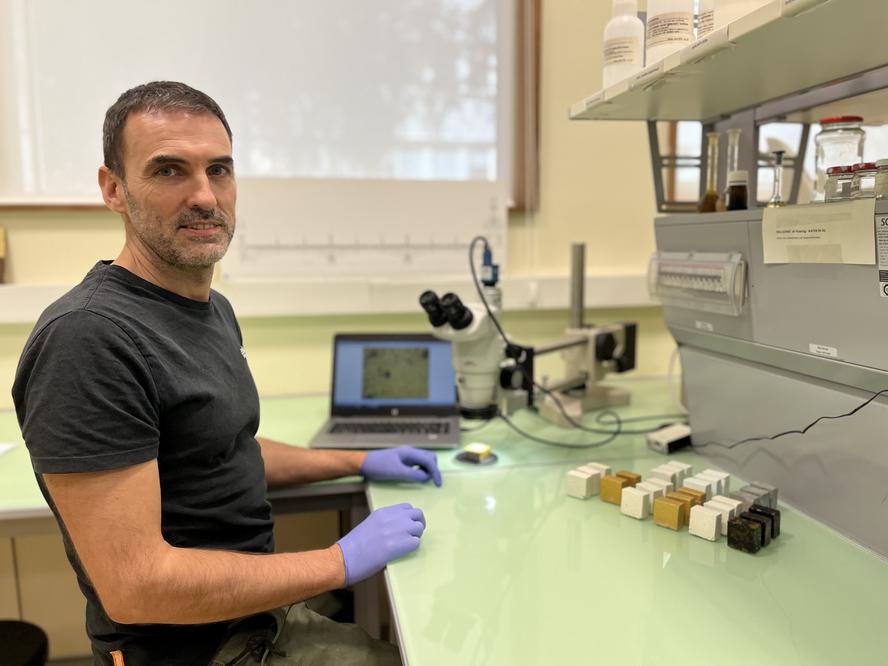“Collaboration between all completes the outcome”
There is often a rigid separation between science and art. José Luis Larrañaga Odriozola, however, demonstrates the close relationship between the two areas. Proof of this is the restoration performed at the Puente de María Cristina de San Sebastián.
In particular, Larrañaga is a professor at the School of Fine Arts in the degree of Conservation and Restoration of Cultural Property, and he was asked to participate in the restoration of the decorative elements of the bridge created a couple of years ago.
It is worth mentioning that this bridge is made of reinforced concrete, which was inaugurated in 1905 and that at that time the use of concrete was not common. That's why Larrañaga says he was "pioneer." "The concrete of his time was not very suitable and the appearance of the bridge was not very pleasant. So, in 1908, they decided to paint, especially the four towers on the bridge’s edges.”
Since then, the bridge has had many interventions. Larrañaga highlighted that of 1985: "The bridge was knocked down and redone as best as possible. But the towers remained and are original. As has been said, in 1908 the towers and some gold-colored parts were painted white, but in each intervention it became golden and white changed. It came to our time with many golden parts and, instead of white, ochre. In our intervention we tried to achieve not the appearance of 1905 but of 1908".
However, restorers are aware that over time used paints would have aged due to environmental factors. Therefore, Larrañaga tried to learn about the future evolution of the paintings to be used. "We acquired the paintings from commercial homes and experimentally aged them to see how long they lasted and how they got older." It is not enough, however, to be durable, they must also be aesthetic because they "also have an aesthetic function". That's what your PhD thesis is all about: taking samples, analyzing your evolution and seeing what may be most appropriate tomorrow.
"It is true that in the future there will be better paintings, more stable, more durable, but studying the different paintings will help us decide which will be better for tomorrow," said Larrañaga. He also highlighted the participation of experts in various areas in the restoration of heritage: "In addition to the Fine Arts, we work engineers, architects, historians, chemists... and collaboration among all completes the result."
It also talks about limits: money and time. "As in other areas of life, these are the ones that condition our work, because many times we don't have the money or time to do all that research." The university has allowed him to do so. And he has strongly supported the university function: "Universities are very important to society. They have to create and disseminate wisdom, and I think companies also have to get in touch with the university, because that collaboration gives very good results, and not just restoration, in everything."
At the university, Larrañaga not only works as a researcher, but also as a professor, a job that he finds very enriching: "I learn a lot from the students and it's not a topic. Actually, being a university professor is a good opportunity to keep learning."






